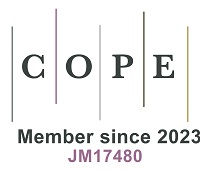REFERENCES
1. CBD (Convention on Biological Diversity).(2020). India biodiversity facts: status and trends of biodiversity, including benefits from biodiversity and ecosystem services. Available from: https://www.cbd.int/countries/profile/?country=in [Last accessed on 13 May 2022].
2. World Bank. (2018). Urban population (% of total population) - India. Available from: https://data.worldbank.org/indicator/SP.URB.TOTL.IN.ZS?locations=IN. [Last accessed on 13 May 2022].
3. IMF. (2021). World Economic Outlook - Update, July 2021. International Monetary Fund, Washington DC. Available from: https://www.imf.org/en/Publications/WEO/Issues/2021/07/27/world-economic-outlook-update-july-2021 [Last accessed on 13 May 2022].
4. World Bank, Total greenhouse gas emissions (kt of CO2 equivalent) - India. World Bank, Washington DC. Available from: https://data.worldbank.org/indicator/EN.ATM.GHGT.KT.CE?locations=IN [Last accessed on 13 May 2022].
5. MoEFCC. (2021). India: third biennial update report to the United Nations Framework Convention on climate change. Ministry of environment, forests and climate change, government of India, New Delhi. Available from: https://unfccc.int/documents/268470 [Last accessed on 13 May 2022].
6. Sinha S, Tripathi P. Trends and challenges in valorisation of food waste in developing economies: a case study of India. Case Studies in Chemical and Environmental Engineering 2021 ;4:100-162.
7. Dhingra SD, Singh R. Mehta. Greenhouse gas emission estimates from AFOLU (Agriculture, Forestry and Other Land Use) sector in India at the subnational level (Version/edition 3.0). New Delhi. GHG Platform India report–Vasudha Foundation. Available from: http://www.ghgplatform-india.org/methdolo-afolu-sector [Last accessed on 13 May 2022].
8. Sen P, Roy M, Pal P. Application of ARIMA for forecasting energy consumption and GHG emission: A case study of an Indian pig iron manufacturing organization. Energy 2016;116:1031-8.
9. Hyndman RJ, Khandakar Y. Automatic time series forecasting: the forecast package for R. J Stat Soft 2008;27:1-22.
10. Gustafsson J, Cederberg C, Sonesson U, et al. Global food losses and food waste: extent, causes and prevention. FAO, Rome. Available from: http://www.fao.org/docrep/014/mb060e/mb060e00.pdf [Last accessed on 13 May 2022].
11. Smith P, Martino Z, Cai D. Agriculture. In Climate Change 2007: mitigation. Contribution of working group III to the fourth assessment report of the intergovernmental panel on climate change. Available from: https://agris.fao.org/agris-search/search.do?recordID=GB2013201586 [Last accessed on 13 May 2022].
12. Smith, P, Clark H, Dong H, et al. 2014 Chapter 11 - Agriculture, forestry and other land use (AFOLU). In: climate change: mitigation of climate change. IPCC Working Group III Contribution to AR5. NY, Cambridge University Press, p. 811–922.
13. FSI (Forest Survey of India). (1987-2021). India State of Forest Report. Forest survey of India available from Dehradun. Available from: https://www.fsi.nic.in/forest-report [Last accessed on 13 May 2022].
14. FSI (Forest Survey of India). (2021a). India State of Forest Report. Forest survey of India, Dehradun. Available from: https://www.fsi.nic.in/forest-report [Last accessed on 13 May 2022].
15. FSI (Forest Survey of India). (2021b). Forest fire activities. Forest survey of India, Dehradun. Available from: https://fsi.nic.in/forest-fire-activities?pgID=forest-fire-activities [Last accessed on 13 May 2022].
16. Giriraj A, Babar S, Jentsch A, Sudhakar S, Murthy MSR. Tracking fires in India using advanced along track scanning radiometer (A) ATSR data. Remote Sensing 2010;2:591-610.
17. MoSPI (Ministry of Statistics and Programme Implementation). (2014) Government of India, New Delhi. Statistical Yearbook-2014. Available from: http://164.100.161.63/statistical-year-book-india/2014/ [Last accessed on 12 Dec 2021].
18. DOLR (Department of Land Resources). (2019). Wastelands Atlas of India 2019. Government of India, New Delhi. Available from: https://dolr.gov.in/documents/wasteland-atlas-of-india [Last accessed on 13 May 2022].
19. Kumar BM, Handa AK, Dhyani SK, Arunachalam A. Agroforestry in the Indian Himalayan region: an overview. In: Gordon AM, Newman SM, Coleman BRW, editors. Temperate agroforestry systems. Wallingford: CABI; 2018. pp. 153-72.
20. MFAHD (Ministry of Fisheries, Animal Husbandry and Dairying). (2019). 20th Livestock Census 2019: All India Report. Government of India, New Delhi. Available from: https://static.pib.gov.in/WriteReadData/userfiles/key%20results.pdf [Last accessed on 13 May 2022].
21. Chhabra A, Manjunath KR, Panigrahy S, Pariharet JS. Spatial pattern of methane emissions from Indian livestock. Current Science 2009;96:683-689. Available from: http://www.jstor.org/stable/24104562 [Last accessed on 13 May 2022]
22. Singhal KK, Mohini M, Jha AK, Gupta PK. Methane emission estimates from enteric fermentation in Indian livestock: Dry matter intake approach. Current Science ;2005:119-127.
23. Chhabra A, Manjunath KR, Panigrahy S, Parihar JS. Greenhouse gas emissions from Indian livestock. Climatic Change 2013;117:329-44.
24. Kumari S, Dahiya R, Naik S, et al. Projection of methane emissions from livestock through enteric fermentation: a case study from India. Environmental Development 2016;20:31-44.
25. IPCC (Intergovernmental Panel on Climate Change). (2018). Global warming of 1.5 °C: an IPCC special report on the impacts of global warming of 1.5 °C above pre-industrial levels and related global greenhouse gas emission pathways, in the context of strengthening the global response to the threat of climate change, sustainable development, and efforts to eradicate poverty, Masson-Delmotte V et al. Intergovernmental Panel on Climate Change. Available from: https://ipcc.ch/sr15/download/#chapter [Last accessed on 13 May 2022].
26. Mosier A R, Duxbury J M, Freney J R, et al. Assessing and mitigating N2O emissions from agricultural soils. Climatic change 1998;40:7-38.
27. Parashar DC, Mitra AP, Gupta PK, et al. Methane emission studies and estimate from Indian Paddy fields. In: van Ham J, Janssen LJHM, Swart RJ, editors. Non-CO2 greenhouse gases: why and how to control?. Dordrecht: Springer Netherlands; 1994. pp. 389-404.
28. DES (Directorate of Economics and Statistics). (2017). PocketBook of agricultural statistics 2017. Ministry of agriculture and farmers welfare, department of agriculture, cooperation and farmers welfare, government of India, New Delhi, 115. Available from: https://agricoop.nic.in/sites/default/files/pocketbook_0.pdf [Last accessed on 13 May 2022].
29. Bhatia A, Jain N, Pathak H. Methane and nitrous oxide emissions from Indian rice paddies, agricultural soils and crop residue burning. Greenhouse Gas Sci Technol 2013;3:196-211.
31. Huang H, Cao J, Wu H, et al. Elevated methane emissions from a paddy field in southeast China occur after applying anaerobic digestion slurry. GCB Bioenergy 2014;6:465-72.
32. Gupta K, Kumar R, Baruah KK, Hazarika S, Karmakar S, Bordoloi N. Greenhouse gas emission from rice fields: a review from Indian context. Environ Sci Pollut Res Int 2021;28:30551-72.
33. Oo AZ, Sudo S, Inubushi K, et al. Methane and nitrous oxide emissions from conventional and modified rice cultivation systems in South India. Agriculture, Ecosystems & Environment 2018;252:148-58.
34. Owen JJ, Silver WL. Greenhouse gas emissions from dairy manure management: a review of field-based studies. Glob Chang Biol 2015;21:550-65.
35. FAO. (2018). Nitrogen inputs to agricultural soils from livestock manure: new statistics. Food and agriculture organization of the United Nations. Available from: https://www.researchgate.net/publication/323613468_Nitrogen_Inputs_to_Agricultural_Soils_from_Livestock_Manure_New_Statistics [Last accessed on 13 May 2022].
36. Ouatahar L, Bannink A, Lanigan G, Amon B. Modelling the effect of feeding management on greenhouse gas and nitrogen emissions in cattle farming systems. Science of The Total Environment 2021;776:145932.
37. Li C, Salas W, Zhang R, Krauter C, Rotz A, Mitloehner F. Manure-DNDC: a biogeochemical process model for quantifying greenhouse gas and ammonia emissions from livestock manure systems. Nutr Cycl Agroecosyst 2012;93:163-200.
38. Sejian V, Samal L, Bagath M, et al. Gaseous emissions from manure management. Encyclopedia of Soil Science 2nd edition. Taylor & Francis. Available from: https://www.researchgate.net/profile/Veerasamy-Sejian/publication/280577945_Gaseous_Emissions_from_Manure_Management/links/5683922b08aebccc4e0fc99c/Gaseous-Emissions-from-Manure-Management.pdf [Last accessed on 13 May 2022].
39. Gupta PK, Jha AK, Koul S, et al. Methane and nitrous oxide emission from bovine manure management practices in India. Environ Pollut 2007;146:219-24.
40. Sajeev EPM, Amon B, Ammon C, Zollitsch W, Winiwarter W. Evaluating the potential of dietary crude protein manipulation in reducing ammonia emissions from cattle and pig manure: a meta-analysis. Nutr Cycl Agroecosyst 2018;110:161-75.
41. Lou Y, Inubushi K, Mizuno T, et al. CH4 emission with differences in atmospheric CO2 enrichment and rice cultivars in a Japanese paddy soil: response of CH4 emissions to CO2 and cultivars. Global Change Biology 2008;14:2678-87.
42. Dinuccio E, Berg W, Balsari P. Gaseous emissions from the storage of untreated slurries and the fractions obtained after mechanical separation. Atmospheric Environment 2008;42:2448-59.
43. Reay DS, Smith P, Christensen TR, James RH, Clark H. Methane and global environmental change. Annu Rev Environ Resour 2018;43:165-92.
44. IPCC (Intergovernmental Panel on Climate Change). IPCC guidelines for national greenhouse gas inventories - Volume 4: Agriculture, Forestry and Other Land Use - Chapter 1: Introduction. 2006, IPCC (Intergovernmental Panel on Climate Change).
45. EPA (Environment Protection Agency). Inventory of U.S. greenhouse gas emissions and sinks: 1990–2008. 2010, U.S. Environmental Protection Agency: Washington DC.
46. Parashar DC, Kulshrestha UC, Sharma C. Anthropogenic emissions of NOx, NH3 and N2O in India. Nutrient Cycling in Agroecosystems 1998;52(2):255-259.
47. Foley JA, Ramankutty N, Brauman KA, et al. Solutions for a cultivated planet. Nature 2011;478:337-42.
48. Tian H, Xu R, Canadell JG, et al. A comprehensive quantification of global nitrous oxide sources and sinks. Nature 2020;586:248-56.
49. Janssens-maenhout G, Crippa M, Guizzardi D, et al. EDGAR v4.3.2 Global Atlas of the three major greenhouse gas emissions for the period 1970–2012. Earth Syst Sci Data 2019;11:959-1002.
50. Ali M, Inubushi K, Joo Kim P, Amin S. Management of paddy soil towards low greenhouse gas emissions and sustainable rice production in the changing climatic conditions. In: Vázquez-luna D, del Carmen Cuevas-díaz M, editors. Soil Contamination and Alternatives for Sustainable Development. IntechOpen 2019; doi: 10.5772/intechopen.83548.
51. Akiyama H, Yagi K, Yan X. Direct N2O emissions from rice paddy fields: Summary of available data: N2O emissions from rice fields. Global Biogeochem Cycles 2005:19.
52. Prasad R. Efficient fertilizer use: the key to food security and better environment. Journal of Tropical Agriculture 2009;47:1-17. Available from: http://jtropag.kau.in/index.php/ojs2/article/view/198 [Last accessed on 26 Dec 2021]
53. Hénault C, Bourennane H, Ayzac A, et al. Management of soil pH promotes nitrous oxide reduction and thus mitigates soil emissions of this greenhouse gas. Sci Rep 2019;9:20182.
54. Žurovec O, Wall DP, Brennan FP, Krol DJ, Forrestal PJ, Richards KG. Increasing soil pH reduces fertiliser derived N2O emissions in intensively managed temperate grassland. Agriculture, Ecosystems & Environment 2021;311:107319.
55. Raut N, Dörsch P, Sitaula BK, Bakken LR. Soil acidification by intensified crop production in South Asia results in higher N2O/(N2 + N2O) product ratios of denitrification. Soil Biology and Biochemistry 2012;55:104-12.
56. Gagnon B, Ziadi N, Rochette P, Chantigny MH, Angers DA. Fertilizer source influenced nitrous oxide emissions from a clay soil under corn. Soil Sci Soc Am J 2011;75:595-604.
57. Kalkhoran S, Pannell DJ, Thamo T, White B, Polyakov M. Soil acidity, lime application, nitrogen fertility, and greenhouse gas emissions: Optimizing their joint economic management. Agricultural Systems 2019;176:102684.
58. Rahman M, Okubo A, Sugiyama S, Mayland H. Physical, chemical and microbiological properties of an Andisol as related to land use and tillage practice. Soil and Tillage Research 2008;101:10-9.
59. Bray CD, Battye WH, Aneja VP. The role of biomass burning agricultural emissions in the Indo-Gangetic Plains on the air quality in New Delhi, India. Atmospheric Environment 2019;218:116983.
60. FAI (The Fertiliser Association of India). All India production data of fertilizers. The fertiliser association of India: New Delhi. Available from: https://www.faidelhi.org/statistics/statistical-database [Last accessed on 26 Dec 2021].
61. FAOSTAT, Food and agriculture data. Available from: https://www.fao.org/faostat/en/. [Last accessed on 16 April 2022].
62. Crippa M, G. Crippa MGD, Solazzo E, Muntean M, et al. GHG emissions of all world countries - 2021 Report, 2021: Luxembourg.
63. Tirado R, Gopikrishna SR, Krishnan R, Smith P. Greenhouse gas emissions and mitigation potential from fertilizer manufacture and application in India. International Journal of Agricultural Sustainability 2011;8:176-85.
64. Halvorson AD, Del Grosso SJ, Jantalia CP. Nitrogen source effects on soil nitrous oxide emissions from strip-till corn. J Environ Qual 2011;40:1775-86.
65. Hoben JP, Gehl RJ, Millar N, Grace PR, Robertson GP. Nonlinear nitrous oxide (N2O) response to nitrogen fertilizer in on-farm corn crops of the US Midwest: nonlinear nitrous oxide (N2O) response to nitrogen fertilizer. Global Change Biology 2011;17:1140-52.
66. Sapkota TB, Singh LK, Yadav AK, et al. Identifying optimum rates of fertilizer nitrogen application to maximize economic return and minimize nitrous oxide emission from rice–wheat systems in the Indo-Gangetic Plains of India. Archives of Agronomy and Soil Science 2020;66:2039-54.
67. Sutton M, Drewer J, Moring A, et al. The Indian nitrogen challenge in a global perspective. The Indian nitrogen assessment. Elsevier ;2017:9-28.
68. Millar N, Urrea A, Kahmark K, Shcherbak I, Robertson G, Ortiz-monasterio I. Nitrous oxide (N2O) flux responds exponentially to nitrogen fertilizer in irrigated wheat in the Yaqui Valley, Mexico. Agriculture, Ecosystems & Environment 2018;261:125-32.
69. Snyder C, Bruulsema T, Jensen T. Greenhouse gas emissions from cropping systems and the influence of fertilizer management—a literature review. Norcross, GA: international plant nutrition institute. 2007.
70. Stehfest E, Bouwman L. N2O and NO emission from agricultural fields and soils under natural vegetation: summarizing available measurement data and modeling of global annual emissions. Nutr Cycl Agroecosyst 2006;74:207-28.
71. Management and use efficiency of fertilizer nitrogen in production of cereals in India—issues and strategies. The Indian Nitrogen Assessment. Elsevier :2017. pp. 149-62.
72. Singh P, Singh G, Sodhi GPS, Benbi DK. Accounting carbon footprints and applying data envelopment analysis to optimize input-induced greenhouse gas emissions under rice–wheat cropping system in North-Western India. J Soil Sci Plant Nutr 2021;21:3030-50.
73. Andreae MO. Emission of trace gases and aerosols from biomass burning – an updated assessment. Atmos Chem Phys 2019;19:8523-46.
74. Chang D, Song Y. Estimates of biomass burning emissions in tropical Asia based on satellite-derived data. Atmos Chem Phys 2010;10:2335-51.
75. Shyamsundar P, Springer NP, Tallis H, et al. Fields on fire: alternatives to crop residue burning in India. Science 2019;365:536-8.
76. Mittal SK, Singh N, Agarwal R, Awasthi A, Gupta PK. Ambient air quality during wheat and rice crop stubble burning episodes in Patiala. Atmospheric Environment 2009;43:238-44.
77. Zhang H, Hu D, Chen J, et al. Particle size distribution and polycyclic aromatic hydrocarbons emissions from agricultural crop residue burning. Environ Sci Technol 2011;45:5477-82.
78. Jain N, Bhatia A, Pathak H. Emission of air pollutants from crop residue burning in India. Aerosol Air Qual Res 2014;14:422-30.
79. NPMCR, National Policy for management of crop residue. 2014, Ministry of Agriculture, Government of India: New Delhi. Available from: http://agricoop.nic.in/sites/default/files/NPMCR_1.pdf [Last accessed on 21 Nov 2021].
80. Ravindra K, Singh T, Mor S. Emissions of air pollutants from primary crop residue burning in India and their mitigation strategies for cleaner emissions. Journal of Cleaner Production 2019;208:261-73.
81. Liu T, Marlier ME, Defries RS, et al. Seasonal impact of regional outdoor biomass burning on air pollution in three Indian cities: Delhi, Bengaluru, and Pune. Atmospheric Environment 2018;172:83-92.
82. Vijayakumar K, Safai P, Devara P, Rao SVB, Jayasankar C. Effects of agriculture crop residue burning on aerosol properties and long-range transport over northern India: a study using satellite data and model simulations. Atmospheric Research 2016;178-179:155-63.
83. Kaskaoutis DG, Kumar S, Sharma D, et al. Effects of crop residue burning on aerosol properties, plume characteristics, and long-range transport over northern india: effects of crop residue burning. J Geophys Res Atmos 2014;119:5424-44.
84. Sarkar S, Singh RP, Chauhan A. Crop residue burning in Northern India: increasing threat to greater India. J Geophys Res Atmos 2018;123:6920-34.
85. Singh RP, Kaskaoutis DG. Crop residue burning: a threat to South Asian air quality. Eos Trans AGU 2014;95:333-4.
86. Bond TC, Doherty SJ, Fahey DW, et al. Bounding the role of black carbon in the climate system: a scientific assessment: black carbon in the climate system. J Geophys Res Atmos 2013;118:5380-552.
87. Ramanathan V, Carmichael G. Global and regional climate changes due to black carbon. Nature Geosci 2008;1:221-7.
88. UNEP (United Nations Environment Program). Food Waste Index Report 2021. 2021a, Nairobi, UNEP (United Nations Environment Program).
89. Agarwal, M. , et al., Food loss and waste in India: the knowns and the unknowns. Working Paper. Mumbai: World Resources Institute India. 2021. Available from: http://www.wri.org/publication/food-loss-and-waste-in-india [Last accessed on 21 Nov 2021].
90. NAAS, Saving the harvest: reducing the food loss and waste. 2019, National Academy of Agricultural Sciences, New Delhi. Available from: http://naas.org.in/documents/SavingtheHarvest.pdf [Last accessed on 25 Mar 2022].
91. UNEP (United Nations Environment Programme), Emissions Gap Report 2021: The heat is on – a world of climate promises not yet delivered. 2021b, UNEP (United Nationa Environment Program): Nairobi. Available from: https://www.unep.org/resources/emissions-gap-report-2021 [Last accessed on 16 April 2022].
92. Kumar BM, Kunhamu TK. Carbon sequestration potential of agroforestry systems in India: a synthesis. In: Udawatta RP, Jose S, editors. Agroforestry and Ecosystem Services. Cham: Springer International Publishing; 2021. pp. 389-430.
93. Nair PK, Mohan Kumar B, Nair VD. Agroforestry as a strategy for carbon sequestration. Z Pflanzenernähr Bodenk 2009;172:10-23.
94. Nair PKR, Nair VD, Kumar BM, Showalter JM. Carbon sequestration in agroforestry systems. Adv Agron 2010;108:237-307.
95. GoI (Government of India). National agroforestry policy - 2014, government of India, department of agriculture and cooperation, ministry of agriculture, New Delhi: New Delhi. 2014. Available from: https://agricoop.nic.in/sites/default/files/NationalAgroforestryPolicy2014.pdf [Last accessed on 21 Nov 2021].
96. Nibedita S, Swati P, Pattnaik M, Mohapatra S. Methane emission and strategies for mitigation in livestock. In: Mishra BB, Nayak SK, Mohapatra S, Samantaray D, editors. Environmental and Agricultural Microbiology :2021. pp. 257-74.
97. Shen Y, Ren L, Li G, Chen T, Guo R. Influence of aeration on CH4, N2O and NH3 emissions during aerobic composting of a chicken manure and high C/N waste mixture. Waste Manag 2011;31:33-8.
98. Lou XF, Nair J. The impact of landfilling and composting on greenhouse gas emissions--a review. Bioresour Technol 2009;100:3792-8.
99. Zhang HR, Sun KJ, Wang LF, et al. Methane emissions from cattle manure during short-term storage with and without a plastic cover in different seasons. J Agric Sci 2021;159:159-66.
100. Varel V, Livestock manure odor abatement with plant-derived oils and nitrogen conservation with urease inhibitors: a review. Journal of Animal Science, 2002. 80(E-suppl_2): p. E1-E7.
101. Aguirre-villegas HA, Larson RA. Evaluating greenhouse gas emissions from dairy manure management practices using survey data and lifecycle tools. Journal of Cleaner Production 2017;143:169-79.
102. Conrad R. The global methane cycle: recent advances in understanding the microbial processes involved. Environ Microbiol Rep 2009;1:285-92.
103. Das S, Adhya T. Dynamics of methanogenesis and methanotrophy in tropical paddy soils as influenced by elevated CO2 and temperature interaction. Soil Biology and Biochemistry 2012;47:36-45.
104. Hou P, Yu Y, Xue L, et al. Effect of long term fertilization management strategies on methane emissions and rice yield. Sci Total Environ 2020;725:138261.
105. Nan Q, Wang C, Wang H, Yi Q, Wu W. Mitigating methane emission via annual biochar amendment pyrolyzed with rice straw from the same paddy field. Sci Total Environ 2020;746:141351.
106. Bodelier PL, Roslev P, Henckel T, Frenzel P. Stimulation by ammonium-based fertilizers of methane oxidation in soil around rice roots. Nature 2000;403:421-4.
107. Fagodiya RK, Pathak H, Bhatia A, et al. Nitrous oxide emission and mitigation from maize–wheat rotation in the upper Indo-Gangetic Plains. Carbon Management 2019;10:489-99.
108. Cowan N, Bhatia A, Drewer J, et al. Experimental comparison of continuous and intermittent flooding of rice in relation to methane, nitrous oxide and ammonia emissions and the implications for nitrogen use efficiency and yield. Agriculture, Ecosystems & Environment 2021;319:107571.
109. Datta A, Nayak D, Sinhababu D, Adhya T. Methane and nitrous oxide emissions from an integrated rainfed rice–fish farming system of Eastern India. Agriculture, Ecosystems & Environment 2009;129:228-37.
110. Bordoloi N, Baruah KK, Hazarika B. Fertilizer management through coated urea to mitigate greenhouse gas (N2O) emission and improve soil quality in agroclimatic zone of Northeast India. Environ Sci Pollut Res Int 2020;27:11919-31.
111. Kashyap D, Agarwal T. Carbon footprint and water footprint of rice and wheat production in Punjab, India. Agricultural Systems 2021;186:102959.
112. Chirinda N, Trujillo C, Loaiza S, et al. Nitrous oxide emissions from cassava fields amended with organic and inorganic fertilizers. Soil Use Manage 2021;37:257-63.
113. Bhuvaneshwari S, Hettiarachchi H, Meegoda JN. Crop Residue Burning in India: policy challenges and potential solutions. Int J Environ Res Public Health 2019;16:832.
114. MAFW (Ministry of Agriculture and Farmers Welfare). Agriculture Census 2015-16: all india report on number and area of operational holdings. 2019, Ministry of Agriculture and Farmers Welfare, Government of India: New Delhi. p. 88.
115. Nath AJ, Lal R, Sileshi GW, Das AK. Managing India’s small landholder farms for food security and achieving the “4 per Thousand” target. Sci Total Environ 2018;634:1024-33.
117. Rumpel C, Amiraslani F, Chenu C, et al. The 4p1000 initiative: Opportunities, limitations and challenges for implementing soil organic carbon sequestration as a sustainable development strategy. Ambio 2020;49:350-60.
118. Knapp JR, Laur GL, Vadas PA, Weiss WP, Tricarico JM. Invited review: enteric methane in dairy cattle production: quantifying the opportunities and impact of reducing emissions. J Dairy Sci 2014;97:3231-61.
119. Byun J, Kwon O, Park H, Han J. Food waste valorization to green energy vehicles: sustainability assessment. Energy Environ Sci 2021;14:3651-63.
120. Lamb WF, Wiedmann T, Pongratz J, et al. A review of trends and drivers of greenhouse gas emissions by sector from 1990 to 2018. Environ Res Lett 2021;16:073005.
121. Friedlingstein P, Jones MW, O’sullivan M, et al. Global Carbon Budget 2019. Earth Syst Sci Data 2019;11:1783-838.
122. Zhang GB, Ma J, Xu H, et al. Mitigation of yield-scaled global warming potential by plastic mulch technology in rice crops in south-western China. In: Y. Shirato and A. Hasebe (eds.). Climate-Smart Agriculture for the Small-Scale Farmers in the Asian and Pacific Region. Tsukuba: National Agriculture and Food Research Organization, Tsukuba, Japan; 2019. Available from: https://www.naro.go.jp/english/laboratory/niaes/publications/fftc_marco_book2019/ [Last accessed on 25 Mar 2022].
123. IPCC (Intergovernmental Panel on Climate Change). Climate change: The IPCC response strategies. Washington DC: Island Press; 1991.







